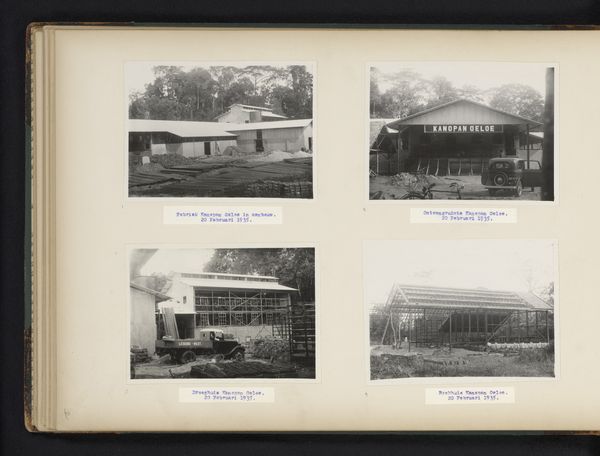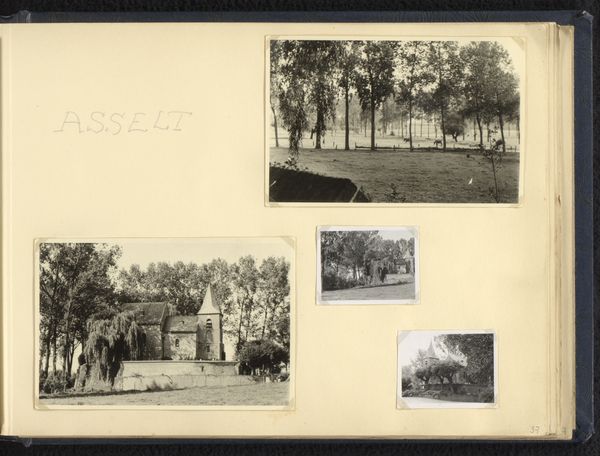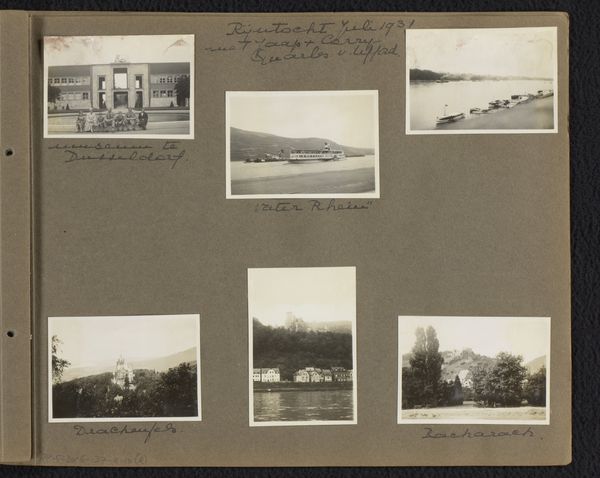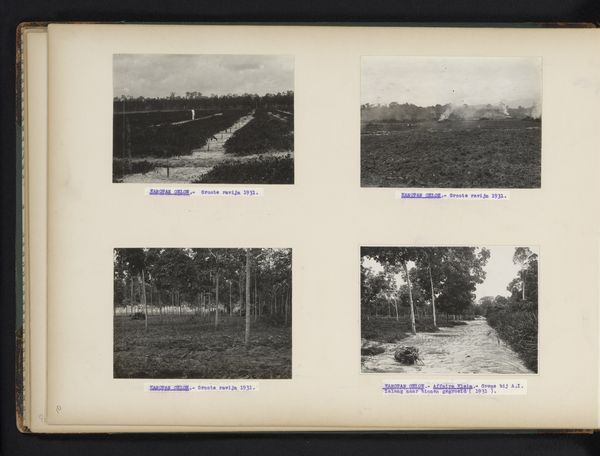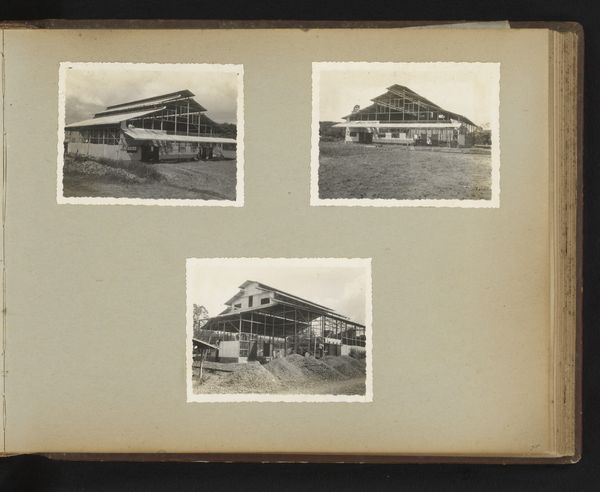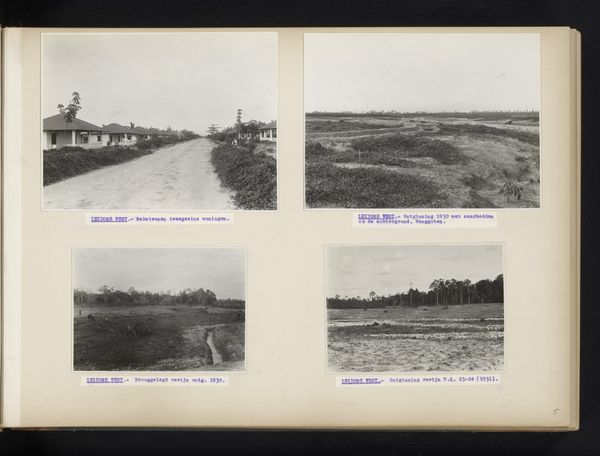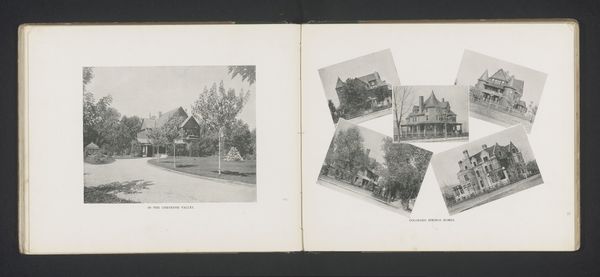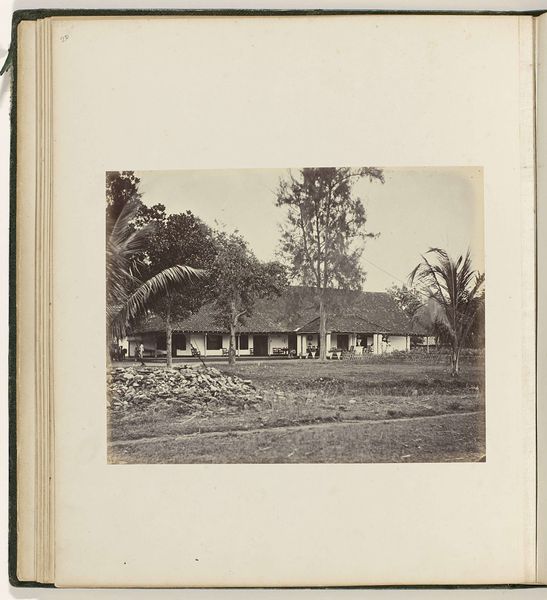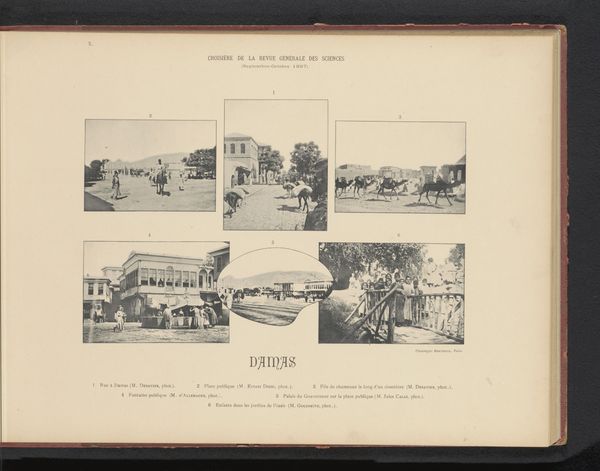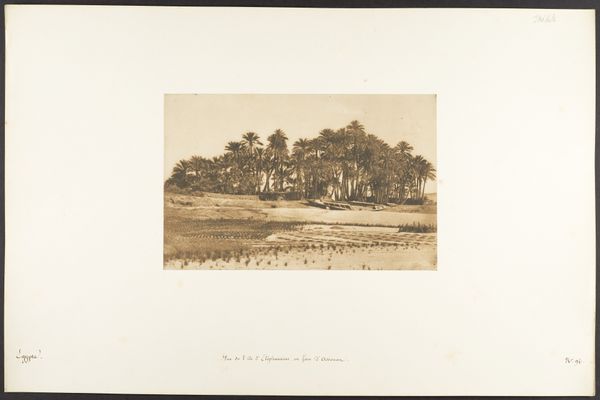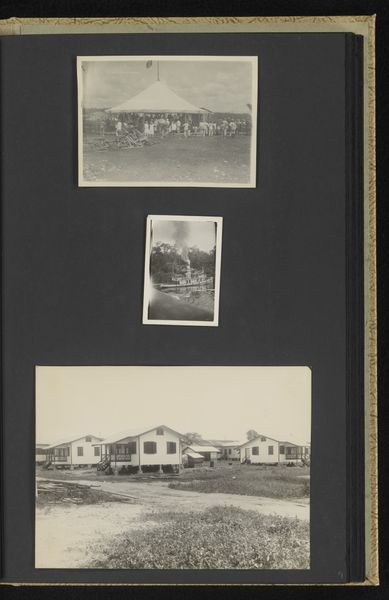
Drie foto's van landschappen bij Ubachsberg, Simpelveld en de Platsbeek 1942 - 1949
0:00
0:00
print, photography
# print
#
landscape
#
photography
#
realism
Dimensions: height 232 mm, width 336 mm
Copyright: Rijks Museum: Open Domain
Curator: Looking at this page from an album showcasing three photographs, what immediately strikes you? It’s attributed to Norbert van den Berg, dating from the period 1942-1949 and offers views around Ubachsberg, Simpelveld and Platsbeek. Editor: There's a quiet simplicity that resonates. The photographs are all grounded in pastoral imagery - a windmill against the horizon, livestock in fields, and a farmhouse nestled amongst trees. There’s almost a sense of old-world charm that feels removed from the turmoil of the time they were created. Curator: That tranquility you observe seems particularly poignant considering the context. This was during and directly after the Second World War. To capture rural life as a central theme might indicate a deliberate focus on preserving cultural heritage amidst broader societal disruptions and German occupation in the Netherlands. Editor: I wonder about the farmhouse depicted. The farmhouse itself is an enduring image of the family and community, rooted in the land, independent. Is it possible Van den Berg was subconsciously – or even consciously - tapping into archetypes of safety and perseverance? A return to what felt authentic and permanent during transient political powers? Curator: Indeed, these photographs' unadorned realism suggests a very different interpretation compared to, say, the more staged propaganda of the era. There’s a distinct absence of any overt political message. It underscores the lived experiences and environments of everyday people and a focus on place. These scenes highlight local topographies – the windmills that harness the wind, fields cultivated for crops, and homes for families. Van den Berg focuses on capturing life as it was, not some projected idea of the future or dominant political force. Editor: It’s true, each image speaks quietly. It’s not just about documentation though, is it? The compositions, particularly the one with the windmill, hold an aesthetic beauty that elevates them beyond mere record-keeping. Curator: Ultimately, van den Berg provides us glimpses of Dutch cultural resilience, quietly resisting through simple documentation of the local landscape. Editor: Right. This page acts as an archive. There's beauty in preserving images connected with the cycle and rhythms of the landscape.
Comments
No comments
Be the first to comment and join the conversation on the ultimate creative platform.
